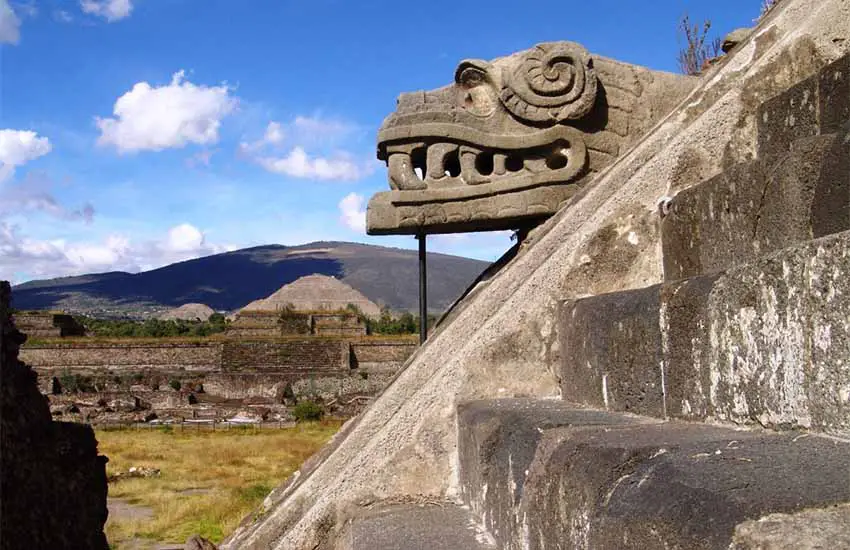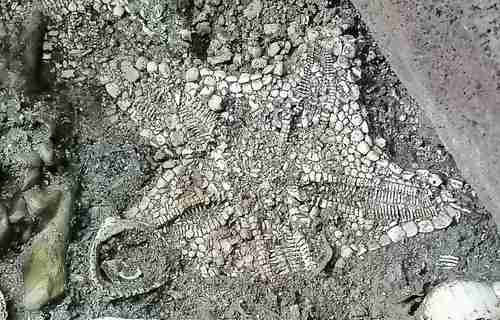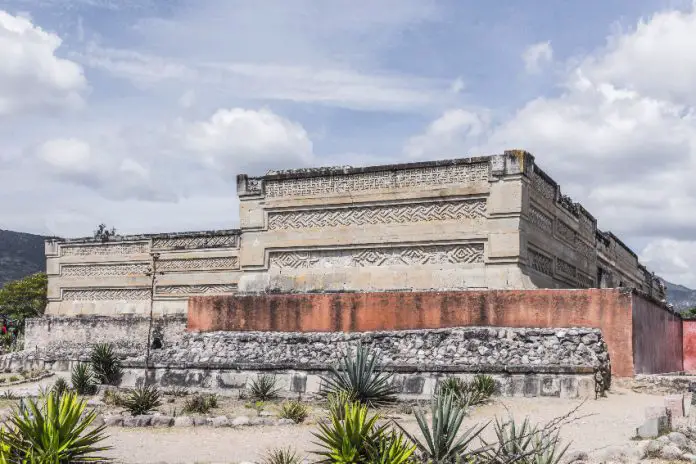Celebrating 60 years of exploration at Teotihuacán
In 1959, Jorge Acosta and Ignacio Bernal designed a plan to excavate and rebuild the archaeological site of Teotihuacán at a scale Mexico had never seen before. Since then, exploration and restoration of the site hasn’t stopped, and remarkable discoveries have happened over the past six decades.
Archaeologists went through a lot of difficulties to unearth the pre-Hispanic buildings. However, after excavating 48 structures in the area, the site was officially inaugurated by President Adolfo López Mateos on Sep. 14, 1964.

These facts and more details on the 60-year history of discovery at Teotihuacán are displayed in the exhibit “Teotihuacán: Proyecto 1962-2022″ at the National Museum of Anthropology and History in Mexico City, open Tuesday to Sunday from 10 am to 7 pm.
“Spirit of 22”: 100 years of muralism in Mexico
Never-before-seen paintings by Diego Rivera and Ramón Alva de la Canal, are now on display along with 246 other works of Mexican muralists at the San Ildefonso school in Mexico City.
The exhibit “Spirit of 22: a century of muralism at San Ildefonso” is a collaboration between the National Institute of Fine Arts and Literature (INBAL) and heirs of the master muralists, collectors and foundations who loaned the exhibited pieces.
Admira obras de Rivera, Leal, Charlot, Revueltas, Alva de la Canal, Siqueiros y Orozco en “El espíritu del 22”, la exposición que celebra 100 años de muralismo mexicano en @SanIldefonsoMx.
246 piezas disponibles hasta junio de 2023@cultura_mx @UNAM_MX @bellasartesinba pic.twitter.com/ANrf6iJZxL
— Secretaría de Cultura de la Ciudad de México (@CulturaCiudadMx) December 19, 2022
Works from the artists Diego Rivera, Fernando Leal, Jean Charlot, Fermín Revueltas, Ramón Alva de la Canal, José Clemente Orozco, and David Alfaro Siqueiros are explored in detail in the exhibition. The display also includes easel work, drawings, sketches, photographs, magazines, and videos.
“Espíritu del 22” will run through June 12 and is open Tuesday to Sunday between 11 am and 5:30 pm.
Significant archaeological findings of 2022
Many discoveries have been unearthed during 2022 from a wide range of archaeological sites in Mexico. However, among the more than 20,000 archaeological pieces registered by the National Institute of Anthropology and History (INAH) throughout the year, a few are truly remarkable.

There was the finding of a life-size sculpture of a human figure in Yucatán; a 16th-century wall painting with a plume and a shield discovered in Morelos; a starfish offering in the underground heart of the Templo Mayor; an effigy of the Mayan god of corn, and an ancient Mayan stela that represents duality between life and death.
On top of these discoveries, the prestigious Spanish Princess of Asturias award was bestowed on Mexican archaeologist Eduardo Matos Moctezuma for his exceptional contribution to the knowledge of pre-Hispanic societies and cultures. Matos Moctezuma directed the site excavation of the Templo Mayor in Mexico City from 1978-82.
But not all is good news. This year closes with an unfortunate event: a group of vandals set a fire in Building 1 of the archaeological site of El Tajín, in Veracruz. The site, declared a World Heritage Site 30 years ago by UNESCO, is being examined by INAH experts..
Updates to the Spanish dictionary
The Real Academia Española (Royal Spanish Academy or RAE), added more than 3,000 words and amendments to its online dictionary this year.
Among the new terms are “micromachismo,” defined as a form of machismo that manifests itself in small acts, gestures or expressions that are usually unconscious; and “conspiranoia,” referring to a tendency to interpret certain events as if they were a conspiracy. Other new additions include “puntocom” to refer to an online business, and “garciamarquiano” as a way to describe something in the style of the great Colombian writer, Gabriel García Márquez.
The update was presented by Santiago Muñoz Machado, director of the RAE and president of the Association of Spanish Language Academies, as well as by Paz Battaner, director of the 24th edition of the RAE dictionary. “We speakers are continually reflecting on the language, not just academics, but people in general…the speakers demand it,” noted Battaner on the accelerating pace of linguistic updates.
The new edition can be found here.
Mitla, Oaxaca wins the INAH “World Cup”
Mitla, the legendary ancient Zapotec “City of the Dead” in Oaxaca, was crowned as winner of the INAH “World Cup” after being chosen by voters on social media as the best archaeological site in Mexico.
The competition included 32 Mexican archaeological sites and in the final round, Mitla beat Palenque in Chiapas.
“With this we reaffirm that Oaxaca is the state with the greatest cultural, artistic, historical and architectural mosaic”, said Salomón Jara Cruz, the state’s Governor. “The prize that has been awarded to this archaeological site places it as the most endearing one for Mexicans,” he added.
Oaxaca’s Minister of Culture, Víctor Cata, said that Mitla is known as the City of the Dead because that is where peoples from the region go to talk to their dead loved ones – they believe that is where the underworld begins.
With reports from mxcity.com, Ministry of Culture, La Jornada Maya, La Lista and El Universal Oaxaca.
